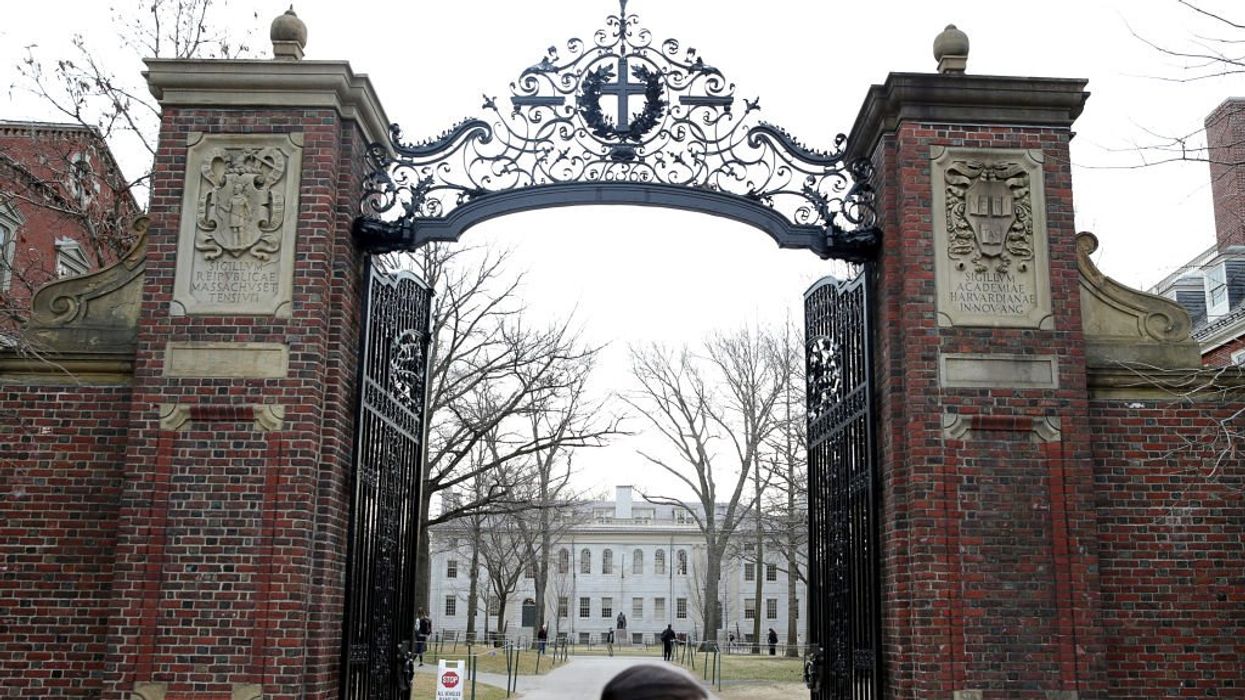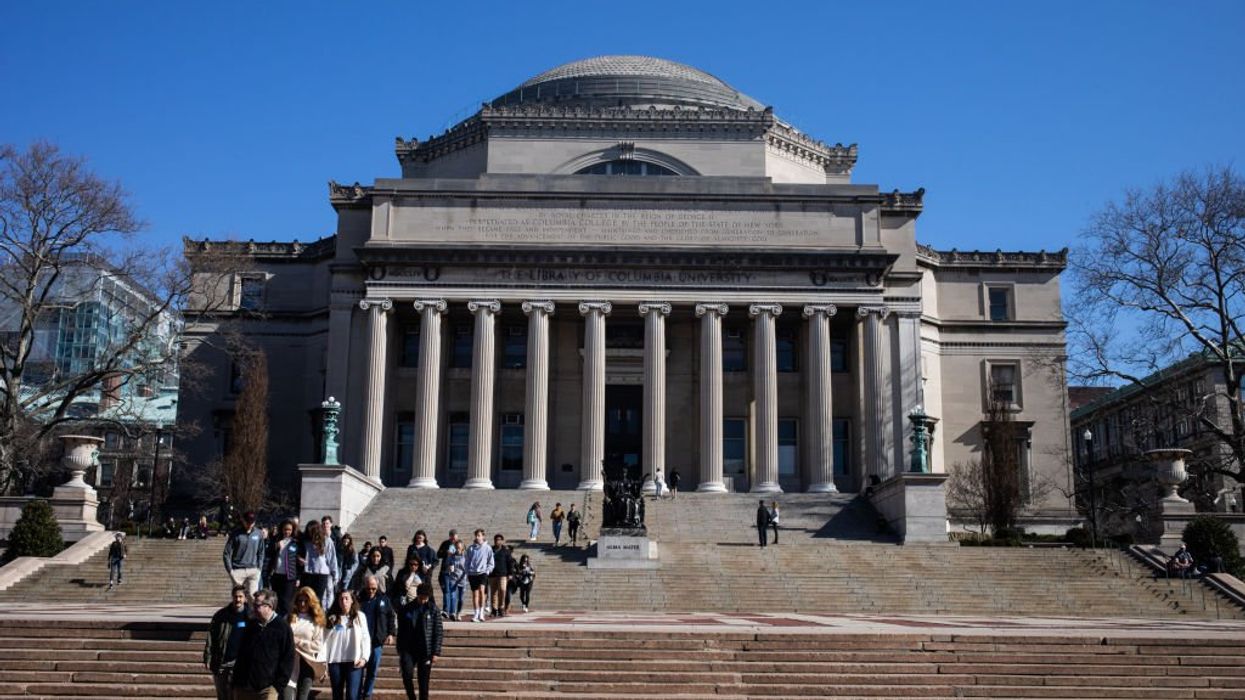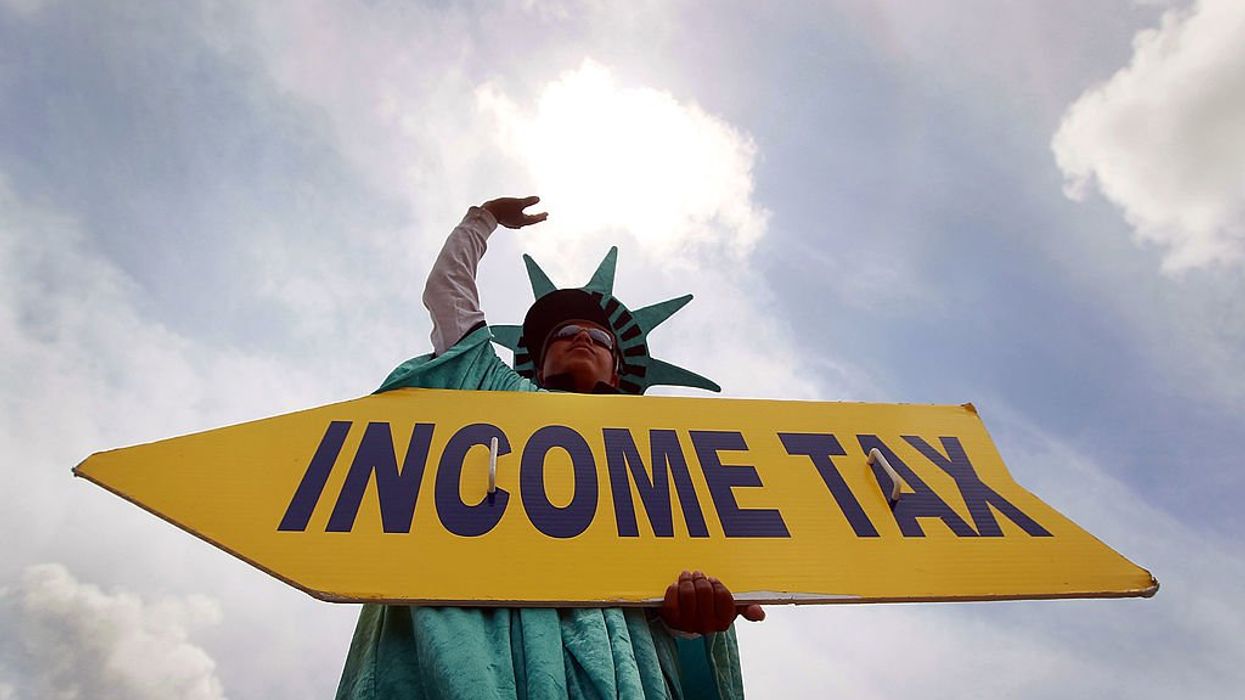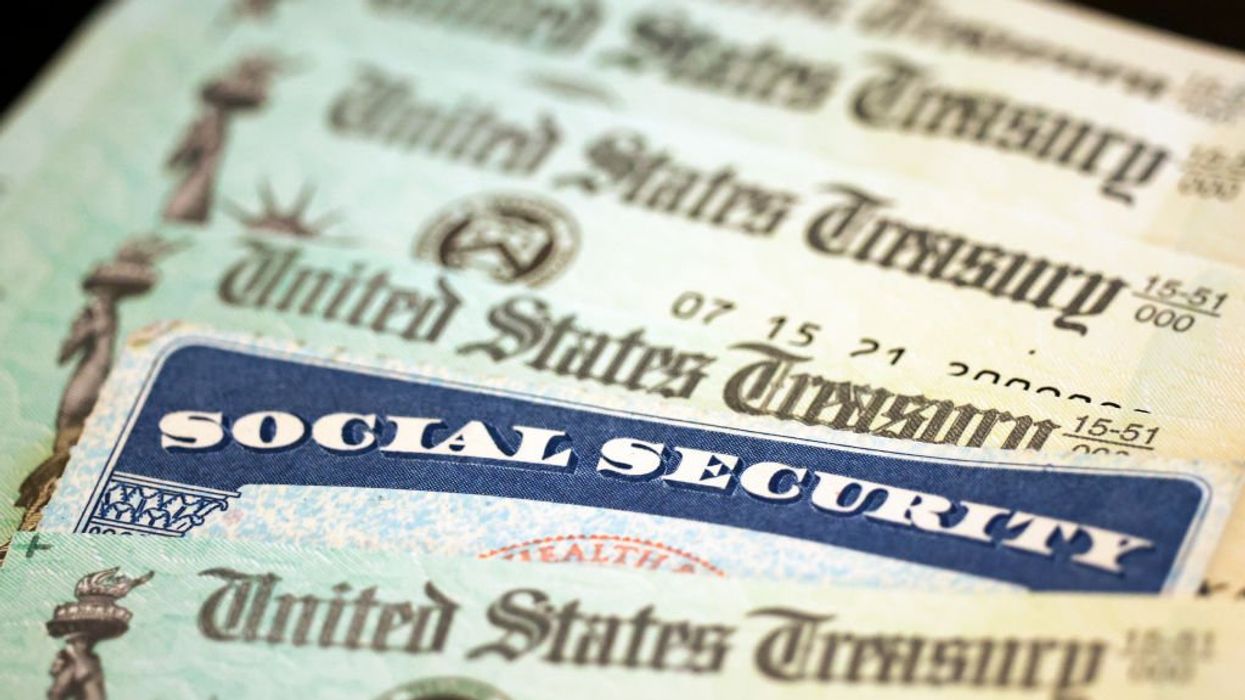PAT: Here's how crazy the housing market is in Texas. My daughter and son-in-law are about to buy a house. And they were looking at this beautiful house. I think it was $155,000. But it had a lot of upgrades. It was kind of small. Like 1800 square feet.
GLENN: I was going to say, in Texas, that's got to be a five-square-foot house.
PAT: But it's beautiful. With all the upgrades that you would expect in a house half a million dollars. So they went to look at it. Loved it. Put an offer in, at 165. Like 10,000 over. They didn't get the -- they didn't get the house. The bid that won was $175,000.
JEFFY: Wow.
PAT: 20,000 over.
GLENN: See, this is what makes me concerned --
STU: Buy high, sell low, right?
GLENN: No. That's the way I usually do it.
JEFFY: Yeah.
GLENN: Here's what makes me really concerned: You know, I live in a town that's in a higher tax bracket, and so there's some pretty spectacular houses. I'm telling you, houses that I thought were spectacular three years ago look like tiny houses.
JEFFY: Yeah.
GLENN: We went for a Sunday drive.
JEFFY: Yes. Yes.
GLENN: This last Sunday. And honestly, we saw three houses that we said, where the hell does that one stop? It doesn't stop.
JEFFY: It doesn't, Glenn. They don't.
GLENN: They don't.
JEFFY: They don't.
GLENN: I saw a house that just kept going and going. Honestly, we were driving down the street --
JEFFY: See, that's the downsizing I believe you're talking about. When you say, I want to sell my house and downsize, I look at those homes and go, that's the downsize --
GLENN: No. You know what, we have a house -- you know, our ranch is like 1800 square feet. We love it. We absolutely love it. Because the family is always together.
JEFFY: Yeah.
GLENN: I mean, it's not great when you're like, "Get out of my face." If somebody has -- is having a really bad day, not a good house. Not a good house. But when you're all getting along, that's -- I mean, that's just great. And we love being close together. And some of these houses that they're building now are so --
JEFFY: Oh, my gosh.
GLENN: -- huge. And, you know, you'll be like, oh, it's a family of three.
What? What do they each have 18,000 square feet? What -- I mean, what's in that house?
JEFFY: Yeah.
PAT: There's a house they've been building for like 18 years, I think. Because they just keep adding new sections to it.
JEFFY: Yeah.
PAT: That is fairly close to us. And you just think, what do you people do for a living? How big a house -- what is this, a Ronald McDonald House? How big does this clown need his house to be?
JEFFY: That's not the only one, man. That's not the --
GLENN: Okay. So I live down the street from one of the guys who is the chairman of the board of the train -- you know, one of the big trains. So, I mean, you know -- I mean, you know --
PAT: Are there big trains?
GLENN: Yeah. There are big trains.
PAT: That's still a thing?
JEFFY: Yes.
GLENN: A guy who is pulling down some coinage.
STU: Some cash. Yeah, a lot of shipping goes down --
GLENN: Yeah, a lot of -- a big shipping area here in the southwest. And he's like the president or chairman of the board or something. And he's got a large house.
JEFFY: Pretty nice place?
GLENN: A large house. We drive by and we're like, "Wow, that's a large house." You go, you know, six blocks away from him, and I'm telling you, you look at him and say, this must be where Jesus lives. Because I know this guy who I can't relate to on how much cash he's making, I know what his house looks like. Who lives here? The entire holy family? What is this house?
(chuckling)
PAT: I think Jesus has a smaller house.
STU: Why?
GLENN: Well, the camels. You have to keep camels. Sheep. You don't want the sheep and the camels mixing.
JEFFY: He only has half a basketball court. Not a full basketball court?
PAT: No, it's like that documentary Indiana Jones: The Last Crusade.
GLENN: Again, learn the difference between a movie and a documentary.
JEFFY: Right.
GLENN: May I go here?
Cost of living. How much did a house cost in 1924? A new car was $275.
PAT: Not very much.
Really.
JEFFY: Wow.
GLENN: $265.
PAT: Wow.
GLENN: Your average rent was $18 a month. And tuition to Harvard --
PAT: Eighteen!
GLENN: Tuition to Harvard for a full year was $250.
STU: Hmm.
GLENN: How much was a house?
PAT: 2,000.
JEFFY: Yeah. Got to be close --
GLENN: Okay. This shows you the run-up of the Roaring Twenties. A new house was $7,720.
PAT: Wow, that's --
JEFFY: Even with the Sears catalog.
GLENN: That's the average house. So now in 1938, how much was a new house?
PAT: During the Depression, probably considerably less.
GLENN: Harvard tuition had gone up to $420. A new car was $860. A new house, $3,900.
JEFFY: Wow.
Oh, yeah.
STU: Wow. Yeah.
GLENN: You go to 1943, it's $3,600.
PAT: Jeez.
GLENN: So you held on to your house -- you had to hold on to your house -- you couldn't sell --
PAT: You were taking too much of a loss.
GLENN: You were taking a bath.
You didn't get back up to a $9,000 until 1952. In '52, tuition to Harvard University was $600. A new car was $1,700.
Let me skip ahead here.
Let's go to -- let's go to 1962. A new house was $12,000. So you've got from 1924 to 1962.
JEFFY: Pretty stable.
GLENN: Pretty stable. Except for the depression where it went down, you've got gone from $7,000 to $12,000. Okay?
In 40 years.
PAT: Uh-huh.
GLENN: 1962, cost of a new house is $12,000. A new car is $2,900. Tuition to Harvard is 1500.
Now let's go to 1973. Let's go to 1970 -- let's go to 1971.
A new house has gone in nine years. A new house has gone from $12,000 to $25,000.
JEFFY: Yeah.
GLENN: Your car has gone to $3,500. And your Harvard tuition has gone to $2,600 a year. Okay?
From in 1927 -- or 1924, $250 a year to go to Harvard. To now in 1971, $2,600. Here's where it gets interesting. Remember, 1971, a house was $2,500. How much was a house in 1978?
PAT: If it acted the way it did during the depression, we were in a serious recession.
JEFFY: No way, though.
PAT: You would think maybe it went down again?
JEFFY: Because in '78 they were still -- they weren't building as much.
GLENN: Remember, double incomes. Double incomes had just started in the early '70s.
JEFFY: It was okay for mom to work.
GLENN: Yep. Yep. So your house went from, in '61 or '63, $12,000 to '71, $25,000.
PAT: So it doubled.
GLENN: To 1978, to$ 54,000.
PAT: Doubled again.
GLENN: Your cost in 1983 has gone to $82,000.
PAT: Wow.
GLENN: A new car is now $8,500. Ticket -- or, tuition to Harvard is now $8100. It had gone from $250 to $1,500 to now $8,000. What happened? The government started guaranteeing tuitions.
Then in 1999, a new house, $131,000. A new car, $21,000. And tuition to Harvard, $31,000 per year.
STU: Hmm.
PAT: And now it's, what? Sixty? Fifty or $60,000 a year?
GLENN: Yeah, I don't have anything past '99.
PAT: Wow.
STU: One of the things, if you remember, go back to the 2007 era, before the housing collapse happened, and you were making the arguments on the air all the time that this stuff was going to occur -- giving me some weird eye signals. I don't know what that means.
GLENN: No, I'm just listening.
STU: You're just pleased with yourself, I got it.
GLENN: No, no, I'm just listening to you.
STU: But one of the things you based that on was the Case-Shiller Index. It was one of the big pieces of data that you found to be incredibly problematic because it controls for things like inflation. These numbers obviously are partially inflation, partially the housing market going up. It's tough to break those things out.
GLENN: And now -- you can't look at anything like Case-Shiller. You can't look at anything anymore because nothing is real. Because the fed has dumped money. Because we have printed money.
STU: Uh-huh.
GLENN: You don't know -- is the stock market real? Is the housing price real? You don't know. Nothing is based on truly free market principles.
STU: Yeah. And I think, you know, there's a lot of complication there, which is what I think you're getting at.
GLENN: Yeah.
STU: But it's still an interesting thing to look at.
GLENN: It is. It is.
STU: So basically 100 is your average of the Case-Shiller Index for basically the entire time. So it ranged between 80 and 120 the entire time. Kind of just measuring how overinflated housing prices are.
GLENN: And 100 is -- I don't remember how it works.
STU: Normal. Let's say normal is 100. So it ranged between 80 and 120 --
GLENN: For how many years?
STU: -- from 1880 to 2000. Okay?
GLENN: 1880 to 2000.
STU: The only exception to that was the Great Depression, where it was a little bit under 80, but it was basically between there the entire time between 1880 and 2000.
PAT: And this is on the Kay Jewelers scale?
GLENN: No, this is Case-Shiller.
STU: Case-Shiller.
GLENN: Who have we talked on? We've had Shiller on?
STU: I can't remember which one it is.
GLENN: Yeah, we've had one of them on. Really, really bright. This is as scientific as you can get on housing.
STU: Yes.
PAT: Okay.
STU: Yes. So between 80 and 120, for 120 years, okay? The housing crisis peaks in 2005?
GLENN: Yeah.
STU: And it hits almost 200. So it's double normal.
PAT: Jeez.
STU: It had never even come close to that in its history. Then you have the housing collapse, right? We all remember the big inflation and the housing collapse. And finally we're getting back -- we're getting back. That's not the story the Case-Shiller Index tells at all. It went from -- about 120 at the beginning of the housing bubble, up to 200, and then it dropped. The bubble popped, and it came back to 120.
GLENN: Still the highest level --
STU: So it was still at the highest level it had been in 120 years, was the end of the crisis.
GLENN: Oh, my gosh.
PAT: Wow.
STU: It has now reached back up to 160.
PAT: Jeez.
GLENN: Oh, my gosh.
STU: From 120 to 160 again.
GLENN: And I tell you, the only place that -- the only place that to me makes any sense at all is Texas. Because the people are moving to -- the influx of people here is just outrageous. How fast it's growing.
JEFFY: You see the apartments they're building.
GLENN: Oh, and they pop up fast. And they're all sold. I mean, it's just so fast. Because people are moving here. Everywhere else, what is happening in your town that is causing this big bubble?
JEFFY: I didn't even see that mentioned in the Kay Jeweler Index.
GLENN: It's not Kay Jeweler.
PAT: I think that's why people go to Jared.
JEFFY: Right.
















